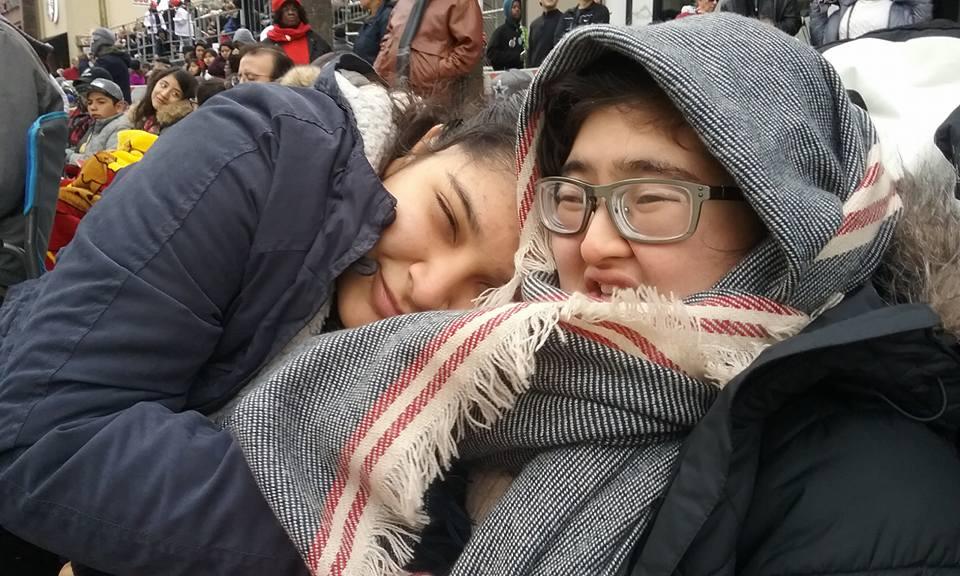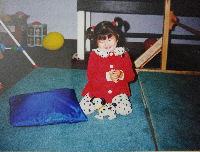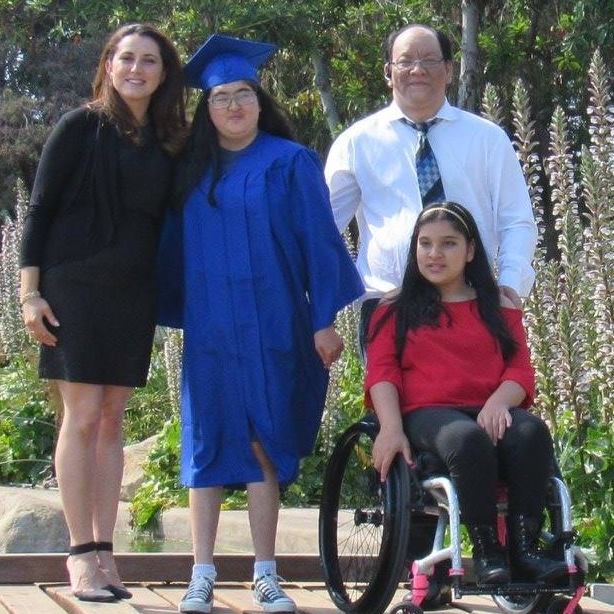
Love and 18 years of a mother's determination
Diana Mack was born in Guatemala, Central America, in a humble medical facility. In this story her mom Nicte recounts the journey Diana and her family have been on. She was a very small baby but not premature, and we were unaware of Diana’s medical condition when she was born. It was only until 18 years later that we received a diagnosis. She didn’t receive any medical supports at first since doctor’s thought she was a healthy little baby. As her mom, I was blamed by professionals so many times for my lack of experience. Eventually I started to believe them.

Her motor and neurological development was delayed, and we had no idea why she wasn’t developing normally. At every check-up, there were no red flags raised until she was 9 months old. Her paediatrician noticed her head hadn't grow since the last check-up, so he sent us for extensive testing. But no test provided any answers. We tried so many doctors until one neurologist told us: “Don’t waste any more resources—what your daughter has, has no cure. Take her to occupational, speech, and physical therapy and do as much as you can. We have no answers for her at this point.”
During that time Guatemala only had one Genetics Specialist, so we tried to find answers elsewhere. We also sent samples to the US, but they were all negative and couldn’t find a match for any genetic condition. It wasn’t until Diana was 13 years old that we learned that she has a genetic condition called neutropenia, a condition where the body is unable to produce enough neutrophils, a type of white cell responsible for the proper functioning of the immune system. However, this didn’t explain the whole picture. I was determined to make sure she thrived and had as normal of a childhood as possible. I repeated whatever she did in therapy, many times a day, every day. After all this intensive intervention, she finally took her first steps when she was three years old. She was still non-verbal, so we taught her some sign language.
We moved to the US when Diana was four and half year’s old. She went to school where she continued therapy. She was still non-verbal and used some signs, so we worked with a “picture exchange system” to promote her brain in the verbal area. She began to speak around the age of six years. When she was seven she got her own personal behavioural aid, which was key to her verbal development. She was also mainstreamed into a general education classroom to learn from typical students and promote her social skills. We enrolled her in summer camps, after school activities, anything to promote development. Diana was like a sponge, able to absorb and retain everything. We continued to visit neurologists and genetics for years, trying to find answers. When she was 6 years old a doctor suggested that she may have Cohen Syndrome, and another suggested the same when she was 12 years old. For years no lab tests were available for this condition. When a lab test became available, medical insurance denied covering the cost of it. She finally got tested at 18 years old, and it confirmed that she was positive for Cohen Syndrome.
Cohen Syndrome is a rare inherited disorder. Features vary widely among individuals, but common features are developmental delay, intellectual disability, small head size, weak muscle tone, progressive nearsightedness and distinctive facial features. This diagnosis has impacted Diana’s future. She will never be able to live on her own—she is way too friendly and trusting, and her autistic behaviour makes socialisation difficult. Her vision is deteriorating due to Retinitis Pigmentosa, an incurable deterioration of the eye. She is legally blind and uses a cane in public. However, she isn’t as sick now that we give her medication to boost her immune system. Developmentally she is like a two or three-year-old and needs 24-hour care. Although she can’t read or write, she is very smart and remembers everything. She graduated last year from high school with a Certificate of Completion. Diana currently attends the Adult Transition Program at her school district and works at a Comic Store twice a week where she does simple repetitive tasks. Diana has amazing support from her younger sister Lourdes, who has Spina Bifida. Read more about Lourdes on mycarespace. Lourdes had taken on the role of older sister and is always watching over Diana’s safety.
Nicte’s says of the journey ‘without a diagnosis you are walking blindfolded, you need to know what are you dealing with, how much time do you have left, what are the specific tests your child should have done regularly and which are not necessary, what other people with the same diagnosis have already tried, what works and what doesn't, where to focus your energy and most of all to have people who actually listen to you and understand your reality. What we have learnt as parents through this struggle of trying to find answers is to never give up trying to find a diagnosis. Determination will be your guide, and you’ll find so much support from those who’ve been in your position. By receiving a definitive diagnosis, we have been able to connect with other families in similar positions and share our journey and provide emotional support. Involve your child in as many activities as you can—they learn from everything. They will use this life experience in ways you can never imagine. It will pay off. Despite her difficulties, Diana is just happiest person in the world: she finds joy in the smallest things, and she is our own angel on earth.

For more information on Cohen Syndrome:
- The National organization for Rare Diseases NORD
- Cohen Syndrome Association
Facebook Support Groups:



